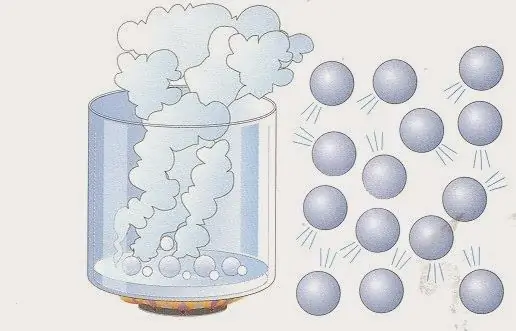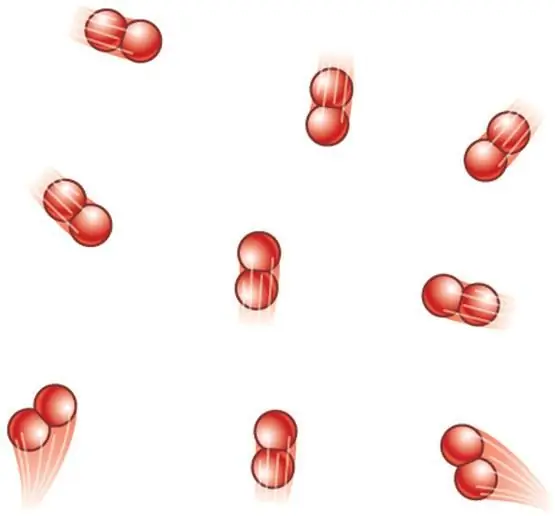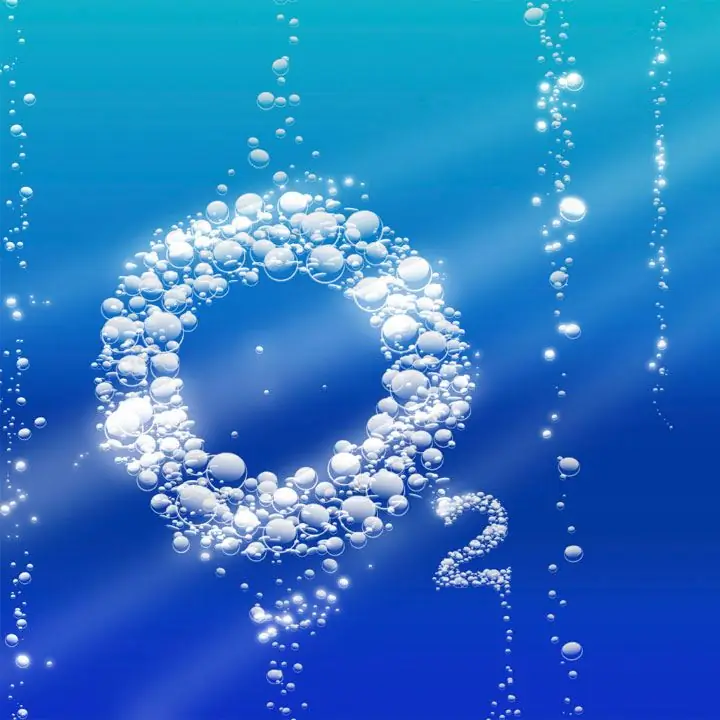Gas has a high reactivity compared to liquid and solid bodies due to the large area of its active surface and the high kinetic energy of the particles forming the system. In this case, the chemical activity of the gas, its pressure and some other parameters depend on the concentration of molecules. Let's consider in this article what this value is and how it can be calculated.
What gas are we talking about?
This article will consider the so-called ideal gases. They neglect the size of the particles and the interaction between them. The only process that occurs in ideal gases is elastic collisions between particles and vessel walls. The result of these collisions is an absolute pressure.
Any real gas approaches ideal in its properties if its pressure or density is reduced and its absolute temperature is increased. However, there are chemicals that, even at low densities and hightemperatures are far from ideal gas. A striking and well-known example of such a substance is water vapor. The fact is that its molecules (H2O) are highly polar (oxygen pulls electron density away from hydrogen atoms). Polarity leads to a significant electrostatic interaction between them, which is a gross violation of the concept of an ideal gas.

Universal law of Clapeyron-Mendeleev
To be able to calculate the concentration of molecules of an ideal gas, one should get acquainted with the law that describes the state of any ideal gas system, regardless of its chemical composition. This law bears the names of the Frenchman Emile Clapeyron and the Russian scientist Dmitri Mendeleev. The corresponding equation is:
PV=nRT.
Equality says that the product of pressure P and volume V must always be directly proportional to the product of absolute temperature T and the amount of substance n for an ideal gas. Here R is the coefficient of proportionality, which is called the universal gas constant. It shows the amount of work that 1 mol of gas does as a result of expansion if it is heated by 1 K (R=8, 314 J/(molK)).
Concentration of molecules and its calculation

According to the definition, the concentration of atoms or molecules is understood as the number of particles in the system, which falls per unit volume. Mathematically, you can write:
cN=N/V.
Where N is the total number of particles in the system.
Before writing down the formula for determining the concentration of gas molecules, let's recall the definition of the amount of substance n and the expression that relates the value of R to the Boltzmann constant kB:
n=N/NA;
kB=R/NA.
Using these equalities, we express the N/V ratio from the universal equation of state:
PV=nRT=>
PV=N/NART=NkBT=>
cN=N/V=P/(kBT).
So we got the formula for determining the concentration of particles in a gas. As you can see, it is directly proportional to the pressure in the system and inversely proportional to the absolute temperature.
Since the number of particles in the system is large, the concentration cNis inconvenient when performing practical calculations. Instead, the molar concentration c is used more often. It is defined for an ideal gas as follows:
c=n/V=P/(R T).
Example problem
It is necessary to calculate the molar concentration of oxygen molecules in the air under normal conditions.

To solve this problem, remember that air contains 21% oxygen. In accordance with D alton's law, oxygen creates a partial pressure of 0.21P0, where P0=101325 Pa (one atmosphere). Normal conditions also assume a temperature of 0 oC(273.15 K).
We know all the necessary parameters to calculate the molar concentration of oxygen in the air. We get:
c(O2)=P/(R T)=0.21101325/(8.314273, 15)=9.37 mol/m3.
If this concentration is reduced to a volume of 1 liter, then we get the value 0.009 mol/L.
To understand how many O2 molecules are contained in 1 liter of air, multiply the calculated concentration by the number NA. After completing this procedure, we get a huge value: N(O2)=5, 641021molecules.






